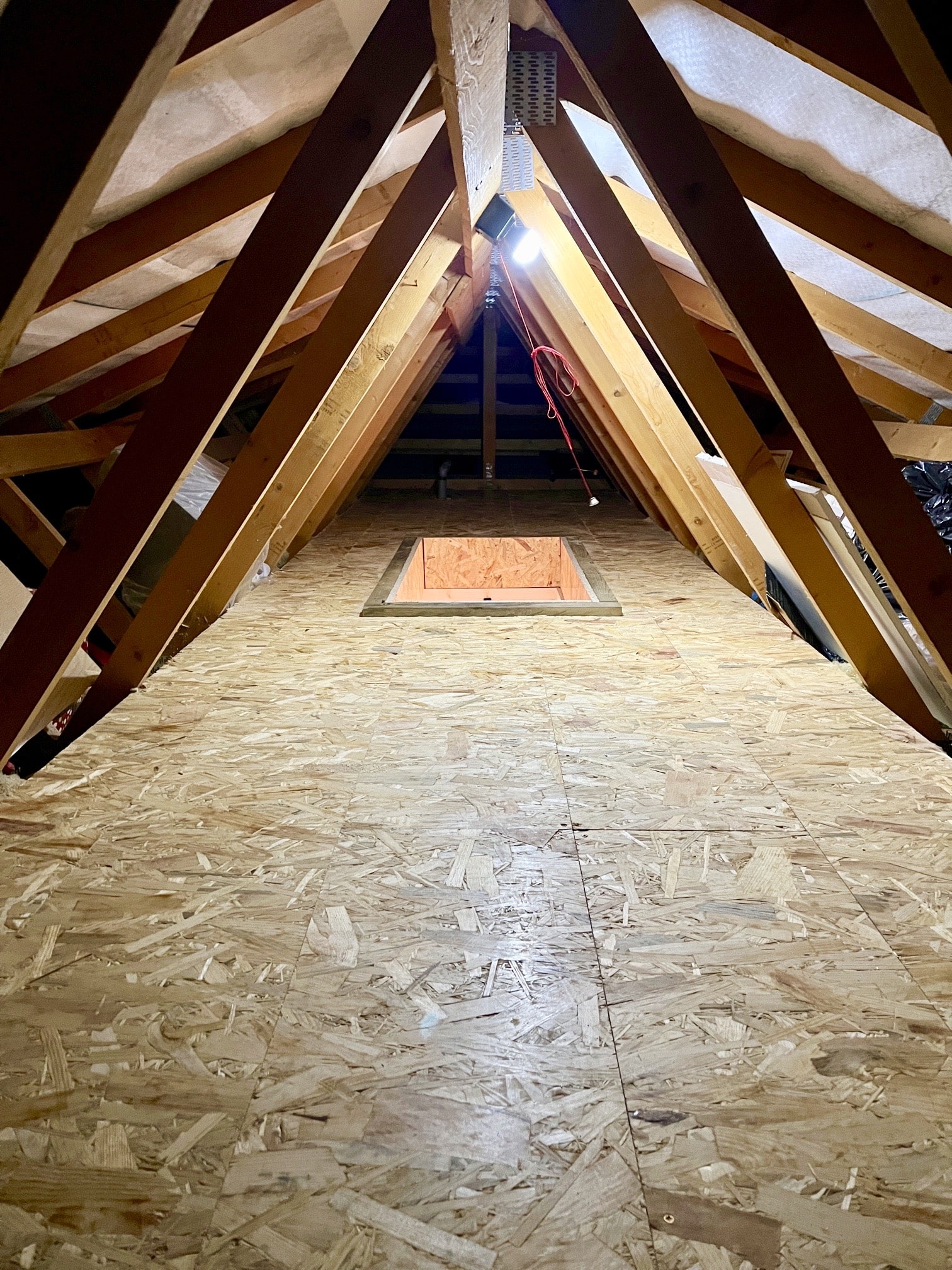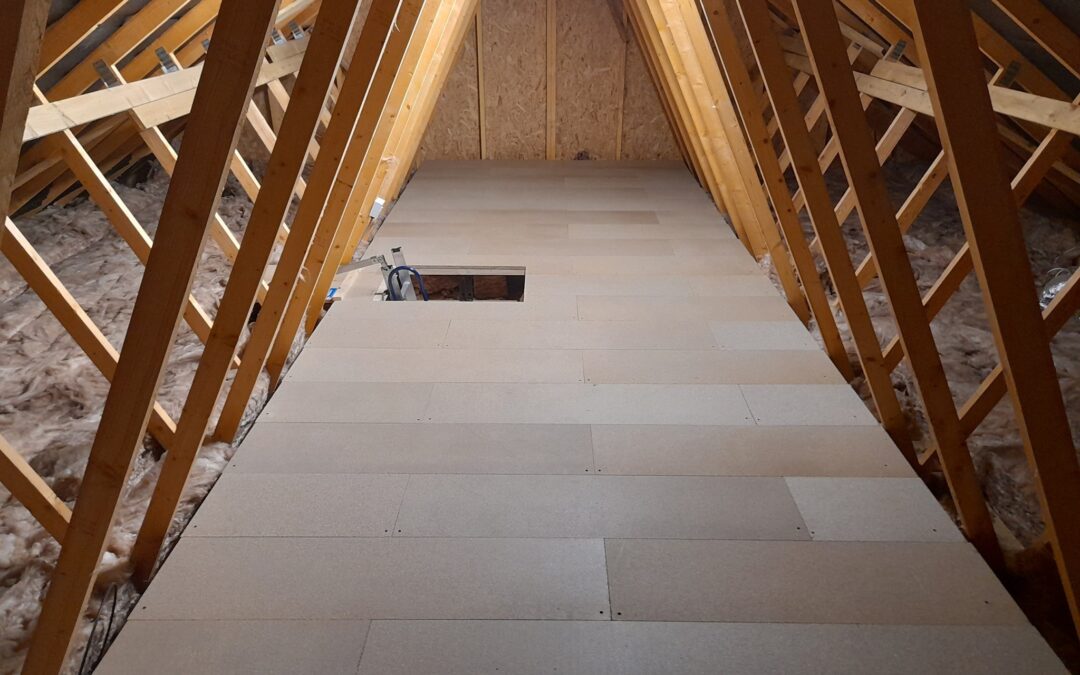There are many benefits of boarding your loft. It provides flooring you can use for storage, and it also helps reduce heat loss, meaning you save money on your energy bills.
You can even see the value of your home increase as a result!
At Loft Doctor, we always recommend using a raised loft boarding system. We even have our own FloorRaise™ system in place to give our clients that extra peace of mind when it comes to boarding their loft space.
Here are some of the questions our clients often ask us about raised loft boarding systems, and why this flooring option is the ideal choice for your home.
Timber Raised Flooring for Boarding.
The 3 x 2 timber subframe is put in place across the joists and can be designed to match different spacings between joists.
Suspended Floor for Boarding.
The 6 x 2 timber subframe is put in place using wall hangers to avoid the joists taking the strain of the weight of the boarding etc in cases where the property is old and existing joists are too weak.

What are the benefits of a raised loft boarding system?
A raised loft boarding system has many benefits over the traditional method of screwing the boards directly to the joists. Here are four advantages to consider.
The first is that weight is distributed more evenly, making your loft safer and meaning you can store more items.
The second is that it means you get an even floor. If your joists are at different levels, you can tweak your boarding system accordingly to eliminate any height discrepancies.
The third is that having space between your boards and insulation gives your insulation room to breathe. Otherwise, dampness and condensation can affect your insulation, meaning it loses integrity over time.
The final benefit, and perhaps the most important, is that you get the full heat-retaining benefit of your insulation. When you screw boards directly into the joists, you end up compressing your insulation. And the more stuff you put on top of your boards, the more your insulation squashes down!
Studies have shown that compressing your insulation reduces the ‘U-value,’ which is the measure of how well your insulation prevents heat from moving between the inside and outside of your loft.
Compressing your insulation can reduce its effectiveness by more than 50%, meaning you save less heat and may see your energy bills spike as a result.
Another thing to consider: it might be that compressing the insulation in your loft means you are no longer compliant with building regulations. This means that if you want to sell your property, you may need to pay to put things right so you can get a completion certificate so that the sale can continue.
Yes, as long as the installation is carried out correctly. A solid raised loft boarding system will distribute weight evenly, meaning you can store items and walk on the boards with confidence.
We always recommend getting a professional loft installation specialist to put your raised loft boarding system in place.
We’ve perfected our FloorRaise™ system, so it’s super strong and built to last.
We always recommend installing raised loft boards.
While you can board directly onto your joists, there is the risk that you’ll compress your loft insulation too much. This means you’ll lose the benefits that your loft insulation provides.
We specialise in loft boarding at Loft Doctor, using our own unique FloorRaise™ system to create a safe, strong, and energy-efficient loft storage area.
Find out more about our loft boarding services, and arrange your free loft health check to see if raised loft boarding is suitable for your property.

